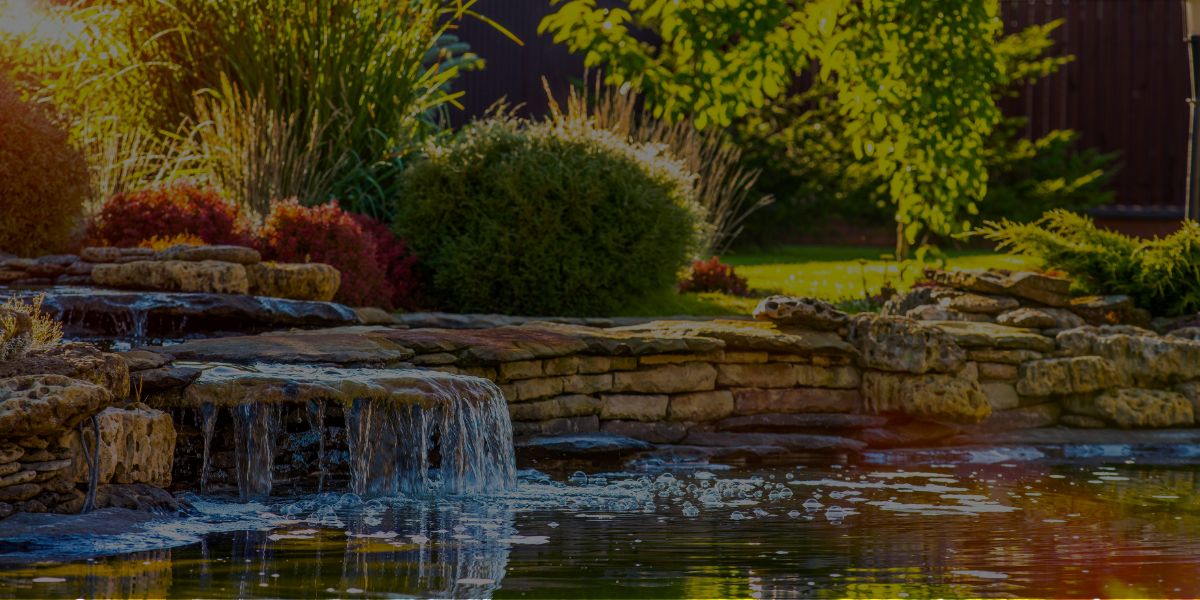There are many mistakes that can be made when it comes to landscaping. In fact, there are so many that it’s hard to know where to start! That’s why we’ve put together this comprehensive list of the 30 biggest landscaping mistakes, complete with tips on how to avoid them.
So, whether you’re a homeowner who is doing your own landscaping for the first time, or a professional landscape designer who wants to make sure you’re not making any common errors, this article is for you!
Let’s get started!
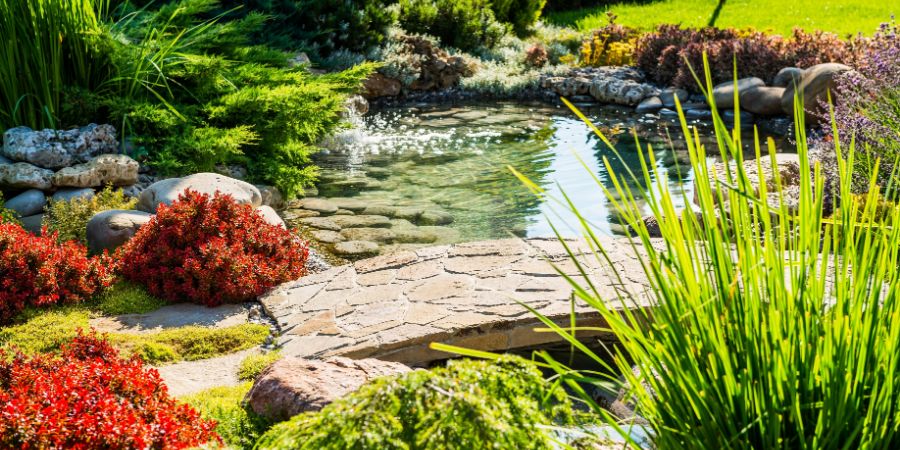
The 30 Biggest Landscaping Mistakes (and How to Avoid Them)
Below, we’ll break down the 30 biggest landscaping mistakes, why they are mistakes, and how you can avoid them…
PRO TIP: New to landscape design? This Beginner’s Guide will give you a crash course on ALL the basics!
Mistake #1: Not having a plan.
Why it’s a mistake
If you don’t have a plan, your landscaping will come out disorganized and unappealing. Without a plan, you may also find yourself wasting time, money, and resources on mistakes that could have been easily avoided by making a detailed plan in advance.
How to avoid it
Always start with a plan! This includes researching your climate, soil type, and other local factors that will affect your landscaping project. Moreover, make sure to:
- Take measurements
- Draw out a plan
- If needed, use landscape design software to help you visualize your project
Mistake #2: Not accounting for climate and soil type.
Why it’s a mistake
Different plants will thrive better in different climates and soils. Not paying attention to the climate and soil of your area can result in plantings that are not suitable for the environment. In turn, this will lead to wasted time, money, and resources.
How to avoid it
Do your research! Make sure you understand what climate and soil type is best suited for the plants you are choosing – that way they will have the best chance of flourishing in your landscape design. Additionally, be sure to select a variety of plants that fit your climate and soil type – this will help to ensure diversity and beauty in your landscaping.
Mistake #3: Not considering maintenance.
Why it’s a mistake
In terms of landscaping mistakes, this is a pretty major one. Not taking maintenance into account can lead to unnecessary expenses, wasted time, and frustration. Additionally, certain plants may require more maintenance than others. Thus, they may not be suitable for your lifestyle or budget.
How to avoid it
First, research the plants you are considering before planting them. This will help you determine how much maintenance they require. From there, you can see if a particular plant will require more care than you can give it. If that’s the case, consider substituting it with a low-maintenance option that still fits your landscape design.
You can also try using natural elements, like rocks and mulch, to minimize your need for maintenance. And remember: no matter what plants you choose, watering them regularly is key!
Mistake #4: Not recycling.
Why it’s a mistake
When landscaping, one of the most important things you can do is recycle. This includes both organic and inorganic materials. Not recycling these materials not only wastes resources; it also generates more waste that ends up polluting the environment.
How to avoid it
Make sure to reuse any organic material that can be used for composting or mulching. Plus, you can also recycle any inorganic materials, such as concrete, bricks, and stones. This will help you to create a more sustainable landscape – something that both you and the environment can appreciate!
Mistake #5: Not pruning your shrubs.
Why it’s a mistake
This landscaping mistake can be easily committed if you are new to gardening. But pruning is essential for keeping your shrubs healthy and looking their best! Without regular pruning, shrubs can grow out of control and become unsightly. Additionally, unpruned shrubs can become more susceptible to pests and diseases, such as:
- Bag worms
- Lace bugs
- Spider mites
- Scale insects
- Aphids
- Wood borers
- Canker
- Blight
- Wilt
- And more!
How to avoid it
Regularly prune your shrubs! This will help to keep them healthy and looking their best. Pruning also helps promote new growth, which can offer a nice design element in your landscape. Also, remember to fertilize your shrubs as well. This will help to ensure they are getting the nutrients they need.
Not sure how to prune your shrubs correctly? Check out this instructional video by Lowe’s Home Improvement!
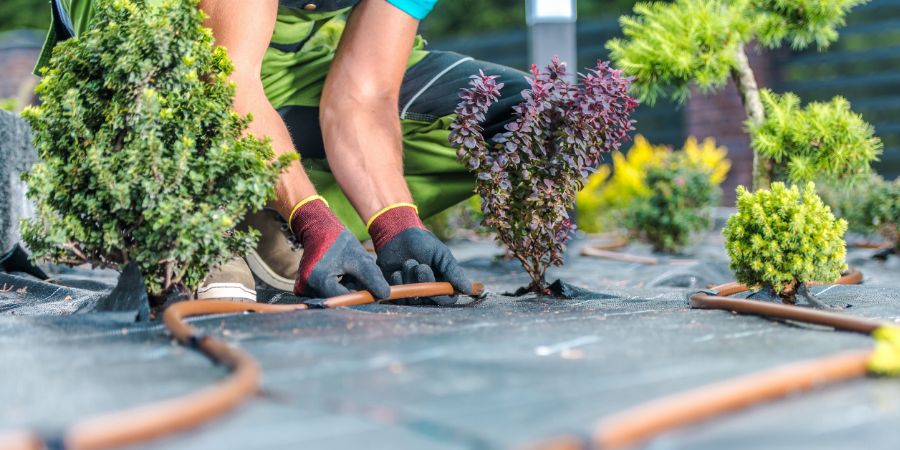
Mistake #6: Too many lawn ornaments.
Why it’s a mistake
We all know that lawn ornaments can add a unique touch to your landscape design. But too many of them can be distracting and overwhelming. Not to mention, they can create an unsightly “clutter” in your yard.
How to avoid it
The key here is moderation! Start by selecting a few lawn ornaments that fit the overall aesthetic of your landscape. From there, place them in strategic locations. This way, they will enhance your design instead of detracting from it.
Finally, be sure to clean up any lawn ornaments seasonally. As a result, you can help ensure that they look their best for years to come!
Mistake #7: Not trimming your hedges.
Why it’s a mistake
Untrimmed hedges can quickly become overgrown, causing them to take up too much space or block your view. Additionally, they may attract pests and diseases, such as:
- Aphids
- Powdery mildew
- Bacterial canker
- Fireblight
- Honey fungus
- Spider mites
- Winter moth caterpillars
- And more!
How to avoid it
Be sure to trim your hedges regularly! This will help keep them looking neat and tidy. Plus, regular trimming can also help promote new growth and keep your hedges healthy.
When trimming your hedges, it’s important to use the right tools. Investing in quality shears or hedge clippers is always a great idea. Or, if you have larger hedges, you may want to consider renting a hedge trimmer from your local hardware store.
Finally, remember to clean your tools after each use. This will help keep them in good condition and extend their lifespan.
PRO TIP: Interested in a career as a professional landscape designer? Become one (even with no experience) in as little as 5 easy steps!
Mistake #8: Planting in the wrong spots.
Why it’s a mistake
Planting in the wrong spots can be a disastrous landscaping mistake!
Why?
Because it’ll throw off your entire landscape design. Plus, this can lead to plants that struggle to grow and thrive due to inadequate light, water, and soil conditions.
How to avoid it
Be sure to do some research before planting anything! Understand the individual needs of each plant, as well as their growing conditions. This way, you can be sure that they are planted in the right spot and will have everything they need to flourish.
Also, make sure your plants have adequate space between them when planting. Give them enough room so that they don’t compete for resources or become overcrowded. This will help ensure that all of your plants get off to a great start!
Mistake #9: Planting your garden too deep.
Why it’s a mistake
Similar to our last landscaping mistake, you also want to make sure that you avoid planting things too deep into the soil. Planting your garden too deep can lead to waterlogged soil, which can suffocate the plants’ roots. As a result, the plants may struggle to grow and thrive.
How to avoid it
When planting your garden, be sure that you are following the recommended depth for each plant. If in doubt, consult with an expert or do some research online. This way, you’ll know exactly how deep to plant each type of seed or plant.
Also, remember that proper drainage is essential! If your soil isn’t draining properly, try adjusting the pH balance or adding more organic matter. This will help ensure that your garden has all of the nutrients it needs while also allowing excess water to drain away.
Finally, make sure that you are watering your garden consistently. This will help ensure that the soil doesn’t become too dry or too waterlogged.
Mistake #10: Girdling your trees.
Why it’s a mistake
If you’re never heard of the term, “girdling your trees“, it’s essentially when you remove or damage the bark of a tree in a complete circle. This can be done intentionally or accidentally – but either way, it can lead to BIG problems for your trees!
For instance, girdling can cause trees to become stressed and unable to photosynthesize properly. This, in turn, can lead to a decline in health and even the death of the tree if left untreated.
How to avoid it
Firstly, be sure to always use caution when pruning or trimming your trees. Secondly, make sure that any cuts are made outside of the tree’s main trunk and away from the living tissue (known as the cambium).
Also, if you ever need to do construction work near your trees, be extra careful. Any type of digging around the base of a tree can potentially cause girdling if not done properly. So, be sure that all tools are being used correctly! Additionally, make sure that any trenches dug nearby are not placed too close to the roots of your trees.
Following these simple steps will help ensure that your trees stay healthy and happy for years to come!
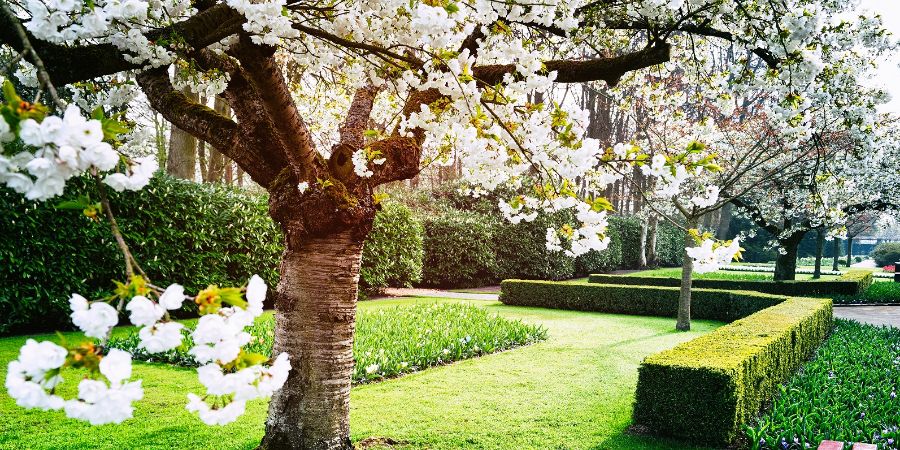
Mistake #11: Your grass is cut too short.
Why it’s a mistake
When it comes to mowing your lawn, you may be tempted to cut the grass as short as possible. After all, this is going to make your lawn look nice and neat – right?
WRONG!
Cutting your grass too short can actually be detrimental to its health. This is because it removes too much of the protective layer of leaf blades and exposes the soil underneath. This can leave your lawn vulnerable to diseases, pests, and even erosion.
How to avoid it
The key here, again, is moderation! Your lawn should be kept at a height between 2-3 inches in order for it to stay healthy and strong. So, try not to remove more than one-third of the grass blades in one mowing session.
Also, make sure that your lawnmower is well maintained and sharpened regularly. This will help ensure that the blades are cutting cleanly and won’t leave any jagged edges. Finally, try to water your lawn early in the morning (before 10 am) so that it has plenty of time to dry out before nightfall.
Mistake #12: Everything is too symmetrical.
Why it’s a mistake
In terms of common landscaping mistakes, this one might come as a surprise. But hear us out!
Symmetry can be a great thing when it comes to landscape design – but too much of it can make your garden look bland and uninspired. If every plant is placed in exactly the same spot and everything looks exactly the same, then there’s not much room for creativity or expression. It also makes your garden look less natural and less inviting.
How to avoid it
Instead of positioning all of your plants in the exact same way, try using asymmetrical placement instead. This will create visual interest and help draw attention to certain plants, features, or focal points in your garden.
Additionally, try mixing up your plant varieties! For example, rather than planting five perfect rows of tulips, why not try incorporating some different types of flowers as well? This will create an eye-catching display and make your garden look more vibrant and alive.
Lastly, don’t be afraid to experiment and get creative! Landscaping is an art form – so don’t be afraid to step outside of the box!
Not sure what the difference is between a landscape designer and a landscape architect? Find out here!
Mistake #13: Using tire planters that hinder your curb appeal.
Why it’s a mistake
This is one of those landscaping mistakes that’s particularly important to avoid if you’re trying to sell your property on the market.
See, tire planters may look stylish, but they can actually be quite hazardous. Firstly, they’re not the most stable of containers – so if you have windy days or heavy rainfall, your plants could end up all over the place. And secondly, tire planters are often made from rubber that can contain harmful toxins and chemicals. This means that these toxins can leach into your soil and potentially harm your plants and other nearby vegetation as well.
Most importantly, if you’re trying to sell your home, then you have to also consider how your lawn looks to other people. Tire planters can be quite unsightly and make your property look like it isn’t well-maintained. As a result, this can hurt your curb appeal and put off potential buyers who may have otherwise been interested!
How to avoid it
If you have your heart set on using tire planters in your garden, then we suggest opting for ones made out of recycled materials such as plastic or wood. These kinds of containers are much more durable and less likely to release any toxins into your soil.
Alternatively, you can also use more traditional planters made out of clay or stone. These will look much more sophisticated and showcase your garden in the best possible light. And remember, you can always add extra visual interest by painting your planters with bright colors or adding stenciled designs!
Mistake #14: Not considering how things look from ALL angles.
Why it’s a mistake
Understandably, you can get so focused on how your landscape looks from the outside that you forget to factor in how it looks from the inside, too. See, when you’re standing in your yard and looking out at your gardens, you get a very different perspective than if you were standing inside your home and looking out.
While landscaping for the outside view is important, it’s just as essential to consider how things look from within the house. Otherwise, you risk creating a landscape that looks disjointed and mismatched from different angles.
How to avoid it
The key here is to plan ahead and make sure you have a clear vision of how your garden will look from all perspectives! When designing your landscape, make sure to step back periodically and see how everything looks from both outside AND inside your house. As a result, you can ensure that no matter which side you’re viewing from, the scenery still looks stunning.
Additionally, taking into account how your plants will look once they’ve fully grown is also key. If you want trees or shrubs lining certain pathways or edges of your property, then be sure to factor in their estimated height and width once they mature. That way, you won’t be surprised when larger plants start to take up space or block the view from certain windows.
Lastly, if you’re struggling to visualize how things will look from all angles, then don’t be afraid to take a few photos and move around to get a better sense of what your landscape will look like. That way, you can make any necessary adjustments before committing to a particular design.
Mistake #15: Forgetting to cover up unsightly spots.
Why it’s a mistake
If you have utility boxes, garden hoses, or other equipment in your yard that detract from the overall aesthetic of your landscape, then neglecting to cover them up can be a big mistake. These eyesores can take away from the beauty of your gardens and make your outdoor space look disorganized and cluttered.
How to avoid it
The good news is that there are plenty of ways to disguise these unattractive elements! Try planting a few shrubs around them or placing stone or wood blocks around their edges to create an attractive border. Or if you want something more substantial, try building a wooden box or trellis to house them instead. This will help draw the eye towards what’s inside and make it look like a purposeful addition to your landscape.
Also, keep in mind that even if you can’t completely obscure the unsightly item, you can still make sure that it blends in with its surroundings. For example, if you have a hose spool sitting out on the lawn, then adding some brightly-colored flowers or a few potted plants will help play up its surroundings and make it look less out of place.
Just remember that with a bit of creativity, you can turn even the most unattractive elements into eye-catching garden features!
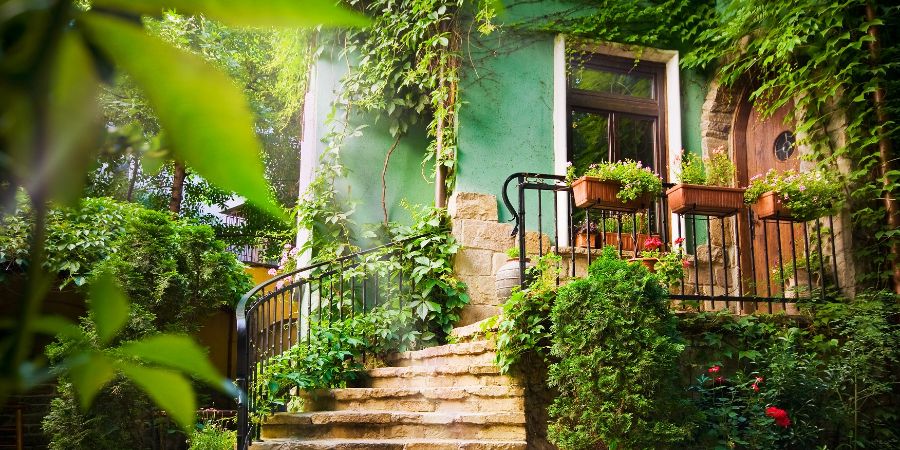
Mistake #16: There are no focal points.
Why it’s a mistake
If your garden lacks focal points, then your landscape can start to look dull. Focal points act as the center of attention in landscaping by creating contrast and drawing the eye towards particular spots. Without them, there’s nothing to really distinguish one area from another, making the entire space appear bland and uninteresting.
How to avoid it
Fortunately, adding focal points doesn’t have to be difficult. For instance, you can try planting some eye-catching shrubs or trees around areas you want to draw attention to and use bright colors or unique shapes where appropriate. Furthermore, you can also create visual interest by adding planters with colorful flowers or other items such as statues, bird baths, water features, etc.
Whatever you choose, just make sure the focal points contrast with their surroundings and catch the eye.
Also keep in mind that an effective landscape should have elements that can be appreciated from both close-up and far away. That way, you can ensure your garden looks interesting no matter where you’re standing!
Mistake #17: Not accounting for the different seasons.
Why it’s a mistake
Landscaping isn’t just about how your yard looks in the springtime; you should also be thinking about what it’ll look like in the winter, and all of the other seasons in-between. Without taking these changing conditions into account, your garden can become an eyesore during certain months or times of year.
How to avoid it
When creating your landscape plan, make sure to think ahead and consider which plants will thrive during each season. For instance, try planting evergreen trees and shrubs that stay green throughout the year or add colorful annuals that bloom even when there’s snow on the ground. That way, you can create a beautiful outdoor space no matter what time of year it is.
You can also use plants to create interesting transitions between seasons, as blooming annuals and perennials can add a burst of color to your landscape just as other greens start to fade away. Just remember that with careful planning, you can make sure your garden looks great year-round!
Need help landscaping in the winter? These 18 landscape design tips will break down everything you need to know to get started!
Mistake #18: Your pots are too big (or too small).
Why it’s a mistake
When using planters and pots to add life to your landscape, size is important. If you choose containers that are too small, then your plants won’t have enough room to grow and will quickly become crowded. On the other hand, if you choose ones that are too big, then they can end up looking disproportionate in relation to their surroundings and take away from your overall design.
How to avoid it
To get the right size for your plant pots, measure out the area where you want them to go before buying or making them. That way, you can make sure they fit properly and are proportional with their surrounding elements. Additionally, if possible, try combining large and small sizes together in order to create visual interest.
You can also add a bit of character to your pots and planters by painting them or adding decorations. That way, you can make sure they’re in keeping with the rest of your landscape design!
Mistake #19: Picking the wrong fence for your landscaping needs.
Why it’s a mistake
When investing in fencing for your property, you should always make sure to pick the right option for your needs. For instance, if you’re looking for privacy then chain link won’t be suitable. On the other hand, if you want something aesthetically pleasing then wood might not be the best choice.
Picking the right fence is also critical when it comes to your landscape design. Often, people are so excited to get their fence installed that they do it without thinking about what they want the rest of their property to look like. But then they realize a little too late that the fence clashes with their other design elements and has to be replaced.
How to avoid it
Start by researching different types of fences and the benefits they offer so that you can find the one that’s most suited to your needs. Additionally, try talking with professionals or visiting local landscaping stores to get their opinions on which type of fence will work best for your home. Once you’ve got an idea of what kind of fence would fit best, double-check measurements so that you can get everything right the first time.
If you’re having trouble with design, consider taking pictures of your property and using a photo editing program to see what different fence styles would look like against your existing landscape. This will allow you to find the right option – without having to buy something only to realize it doesn’t work!
Mistake #20: Not fertilizing your landscape correctly.
Why it’s a mistake
Without proper fertilizing, your landscape won’t get the nutrients it needs to thrive. This can lead to poor growth, brown patches, and other issues that could negatively impact your design.
How to avoid it
To ensure your plants are getting the nourishment they need, create a fertilizing schedule ahead of time so you don’t forget. Additionally, consider using organic fertilizer, if possible. This will provide the most natural way for your plants to receive their nutrients.
Be sure to follow the advice of experts when applying fertilizer, too. For example, by not overdoing it or applying in areas where there are no plants! Finally, make sure to test soil pH levels from time-to-time to check that the nutrients are being absorbed correctly. When you do this, your plants and lawn have a way better chance of staying healthy!
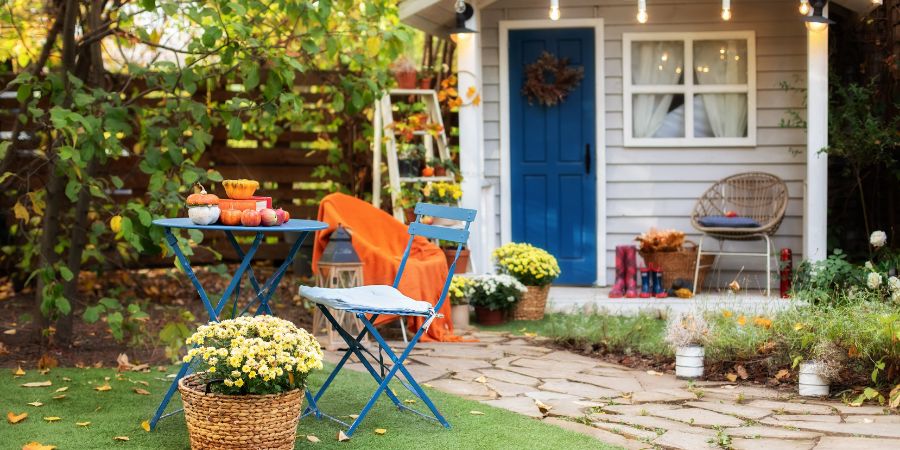
Mistake #21: Using the wrong furniture.
Why it’s a mistake
We can’t discuss landscaping mistakes without talking about furniture! Furniture is an essential part of any landscape design. However, if you don’t pick the right kind, then the rest of your design could suffer as a result.
This can mean:
- Picking furniture that’s too large for the area
- Using materials that are not suitable for outdoor use
- Placing the furniture in a spot that doesn’t make sense
- Selecting furniture that clashes with the rest of your landscape design
How to avoid it
When choosing furniture for your landscaping project, consider how big it needs to be in relation to its surroundings and what type of material would work best in terms of maintenance and weather resistance.
You also want to make sure that whatever you choose goes with the overall aesthetic of your design – both color-wise and style-wise! Additionally, look into purchasing durable pieces from trusted brands when possible so that you won’t have to worry about any surprises down the road.
Last but not least, remember to think carefully about where you’ll be placing your furniture. Make sure it’s out of direct sunlight so that materials don’t fade. In the same breath, make sure it’s also away from walkways or pools so that it doesn’t get damaged!
With a bit of extra attention, you can pick out furniture that looks great and lasts for years.
Mistake #22: Neglecting outdoor lighting.
Why it’s a mistake
Outdoor lighting is another essential element for any landscape design. Without it, your yard could feel incomplete or even uninviting after dark. Not to mention, neglecting to light up your landscaping can leave the space feeling unsafe at night.
How to avoid it
The right kind of lighting will make all the difference in your backyard. So, when choosing lights for your home, be sure to research what type you need and what would best fit with your overall design.
Solar-powered lights are a great option because they require minimal effort from you – but still provide plenty of illumination! Consider adding spotlights around walkways so that you don’t have to worry about tripping in the dark and strategically placing lights near any focal points that you’d like to show off.
You can even opt for colored lights if you want to add a festive touch. Just remember that they may need to be changed more often due to their limited battery life.
One way or another, having the right lighting will really make your landscape come alive!
Mistake #23: Not making your landscape design wildlife-proof.
Why it’s a mistake
Animals and insects can be very attracted to certain plants, especially if there is food or shelter involved. This can mean that some of your landscaping efforts could get destroyed in an instant if you don’t take measure to avoid it
How to avoid it
The best way to prevent this from happening is to make sure you plan ahead. For starters, take into account any local wildlife that may be around your area and research which plants they’re naturally attracted to. Then, try and plant those further away from the main part of your landscape design so that they don’t impact your hard work.
You should also consider adding birdbaths, feeders, and other forms of natural shelters within your landscaping project. Just ensure they’re kept away from where any animals may inhabit! Doing this can help to encourage more wildlife into your yard and make it feel like a true sanctuary, while keeping your garden safe.
Lastly, be sure to check for any pests or animals that may have already invaded your property and take measures to remove them quickly.
By being proactive, you can make sure your landscaping project is wildlife-proof, aesthetically pleasing, and capable of looking great for many years to come!
Mistake #24: Poorly made fire pits.
Why it’s a mistake
Fire pits can be great additions to any yard – they provide warmth, light up the area, and can even turn into an entertaining centerpiece. However, not all fire pits are created equal. Poorly made ones can end up unreliable and may need more maintenance than necessary. Not to mention, if not installed correctly, they can also pose a major safety hazard on your property.
How to avoid it
If you’re looking for a fire pit that’ll last for years, start by doing some research! Make sure the one you choose is made from strong materials like stainless steel or cast iron, as these will have the highest endurance. Additionally, look for models that come with built-in safety features like spark screens or covers so that you won’t have to worry about dangerous sparks flying out of the pit.
When it comes to installation, make sure to follow the manufacturer’s instructions carefully and double-check for any potential safety hazards. Doing so will help ensure your fire pit is secure and ready to use without any major risks or worries!
Mistake #25: Not keeping color in mind.
Why it’s a mistake
Color is a VERY important part of any landscape design, as it can help to create a certain mood and add visual interest to your backyard. But if you don’t take the time to consider what colors you’re using, then your entire landscape may end up looking dull and unappealing.
Furthermore, if you don’t strategically place your colors, you risk creating an unbalanced look that can be distracting rather than aesthetically pleasing.
Want to become a master of color? Earn a globally-recognized International Color Consulting Professional (ICCP) certification + designation in as little as 3 short months. Enroll in QC Design School’s self-paced, online Color Consultant Course today!
How to avoid it
Start by taking into account the existing color scheme in your yard. This will help you decide which tones would look best together. From there, consider adding flowers or plants that have vibrant hues like reds, oranges, and yellows! These can really bring out any details and make the space even more inviting.
You should also pay attention to how the different elements in your design interact with each other. For example, if you have a large tree or other structure that’s the same color as your house, it might be best to choose softer tones for the surrounding plants and pathways. Doing so will make sure all the colors are balanced and harmonious.
Lastly, don’t forget to consider any existing accents like benches or water fountains. You may want to paint these in a color that complements the rest of your design. Taking the time to make sure everything fits together will ensure you create a truly beautiful and cohesive landscape.
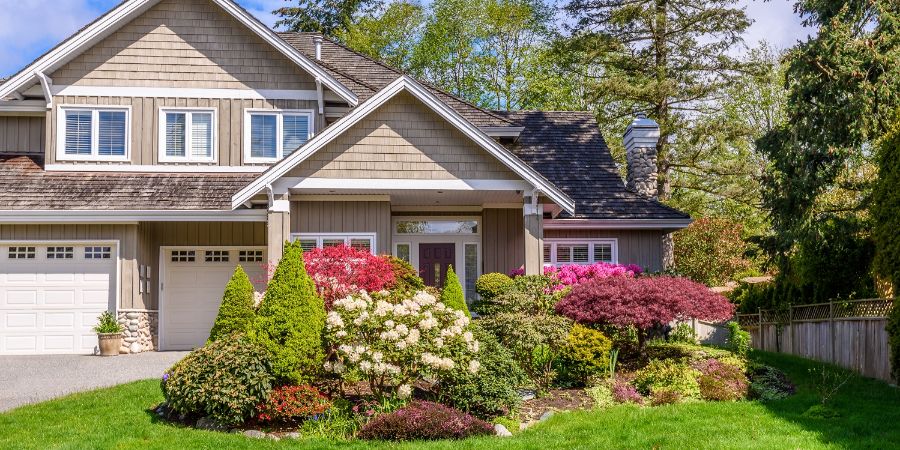
Mistake #26: Using harmful lawn chemicals.
Why it’s a mistake
Lawn chemicals can be tempting to use, as they promise quick and easy solutions to pesky weed or insect infestations. However, these products can also be very dangerous if not used properly – not only to you and your family, but to the environment too. Not to mention, many of them are ineffective and won’t give you the desired results anyway.
Some examples of lawn chemicals we recommend against are:
How to avoid it
The best way to deal with lawn pests is through prevention and natural methods. Start by making sure your soil has the right balance of nutrients so that it can better defend itself against weeds or insects. You should also consider growing plants that are native to your area as they tend to be more resistant to local pests.
Finally, if you do encounter a problem, try using natural solutions first before resorting to chemicals. You can make your own insect repellent out of herbs and spices, or use vinegar and salt as a weed killer. Doing this will help keep your lawn healthy without having to rely on potentially dangerous chemicals.
Mistake #27: Improper irrigation.
Why it’s a mistake
Having the right irrigation system is essential for keeping your plants healthy – but if it’s not installed properly, then you could end up with an inefficient or even damaging setup. Not to mention, having too little or too much water can also lead to costly issues like flooding or drought-like conditions in your yard.
How to avoid it
The best way to make sure your irrigation is set up correctly is by consulting with a professional landscape designer who can assess the specific needs of your garden. They’ll be able to recommend the right type of system and can ensure everything is installed properly so that you don’t have any future problems. Furthermore, they may suggest adding features like rain sensors or automatic shutoff valves which can help conserve water and save you money.
PRO TIP: Become a landscape designer yourself in as little as 12 short weeks! Enroll in QC’s self-paced, online Landscape Design Course today and add our International Landscape Design Professional (ILDP) to your resume!
Mistake #28: Your concrete is cracked.
Why it’s a mistake
Cracks in concrete can be both an eyesore and a safety hazard. Not only do they make the surface look uneven and unappealing, but any sharp edges could also cause injuries if you or someone else were to trip on them.
How to avoid it
The best way to avoid cracked concrete is by making sure your base is properly prepared beforehand.
Start by removing any existing debris from where you’re planning on pouring the concrete and then lay down gravel for drainage. Next, use a trowel to level out the surface and make sure there are no gaps or hollows before you start pouring. Finally, wait until all of the concrete has completely dried before walking on it – this will help ensure it stays in one piece and doesn’t crack.
Mistake #29: Going over budget.
Why it’s a mistake
It can be easy to get carried away when planning out your dream landscape. After all, who doesn’t want a beautiful garden full of plants, flowers and water features? However, making sure you stay within budget is essential if you don’t want to end up overspending!
How to avoid it
The best way to avoid going over budget is by making sure you have a realistic plan before starting any work. Break down each step of the process into individual tasks and then assign an estimated cost for each one. This will help ensure that you know exactly how much money needs to be allocated for each stage and will also give you an idea as to what changes need to be made in order to stay within your budget.
Mistake #30: Not having a plan for maintenance.
Why it’s a mistake
Having an inspiring landscape is one thing, but keeping it that way requires regular care and attention. Without the proper maintenance plan in place, you could end up with overgrown plants, weeds, and even damage from pests or disease.
How to avoid it
The best way to make sure you’re taking the necessary steps to keep your landscape looking its best is by creating a maintenance plan. Start by writing down all of the tasks that need to be done on a regular basis, such as weeding, pruning and fertilizing. Then, assign each task a frequency – such as weekly, monthly or quarterly – and make sure you stick to it.
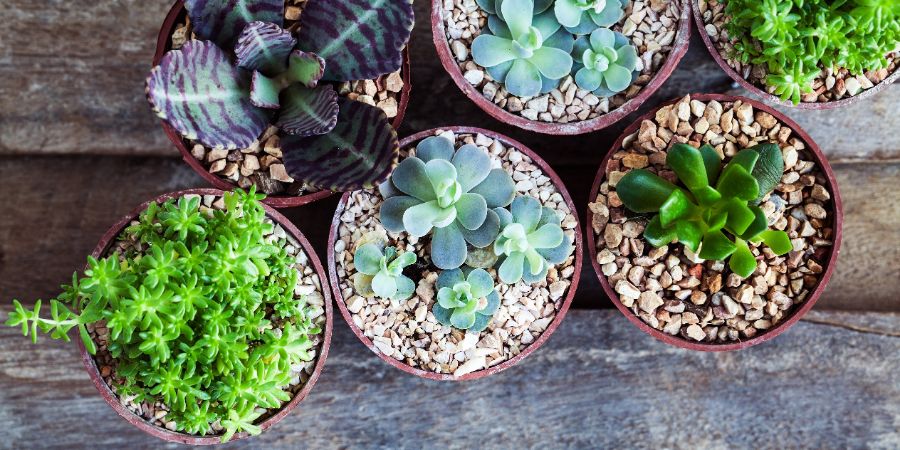
Garden Design Mistakes: Not Hiring a Landscape Designer
Okay, there’s a reason we didn’t include this in our list of 30 landscaping mistakes… Because it’s so important, it deserves its own section!
No matter how experienced you are in the landscaping world, hiring a professional landscape designer can be a great way to make sure your project turns out perfectly. Not only will they have the experience and expertise to help you avoid any costly mistakes, but they’ll also be able to bring creative ideas that you may not have thought of on your own.
Plus, they’ll be able to make sure everything get the most out of your space and create a beautiful oasis that you can enjoy for years to come. So, don’t skimp on hiring a professional – it could mean the difference between an exceptional outdoor space and one that’s just okay!
PRO TIP: Are you a landscape designer who’s currently having trouble finding clients? Try out these 20 ideas and see your calendar book up ASAP!
Landscape Design Mistakes: Conclusion
With all of these mistakes in mind, it should be easier to plan out your perfect outdoor oasis. Whether you’re a homeowner or a professional landscape designer, taking the time to consider each misstep will help ensure that everything goes smoothly and that you end up with the garden of your dreams – without any unexpected surprises!
Good luck and thanks for reading!

